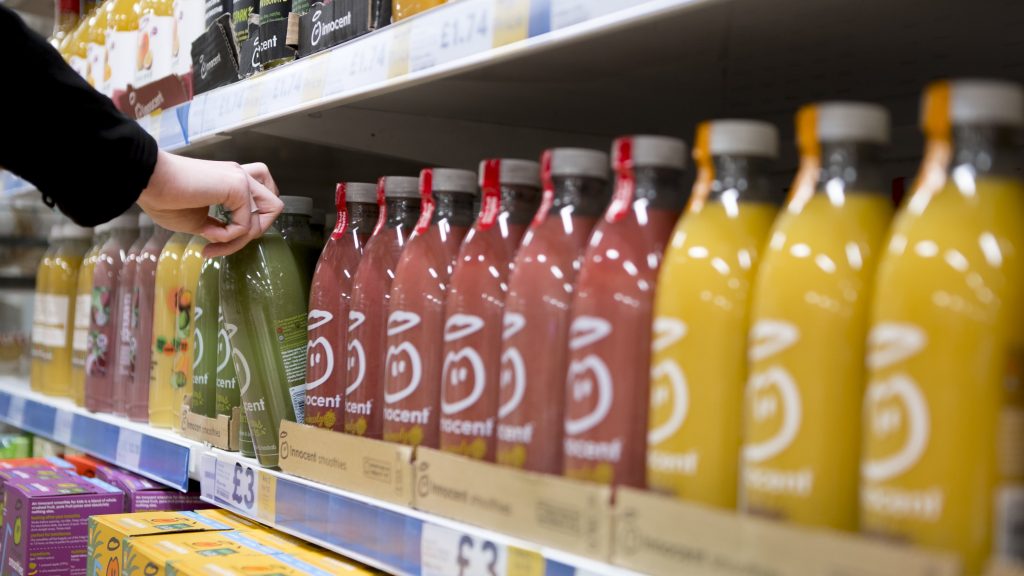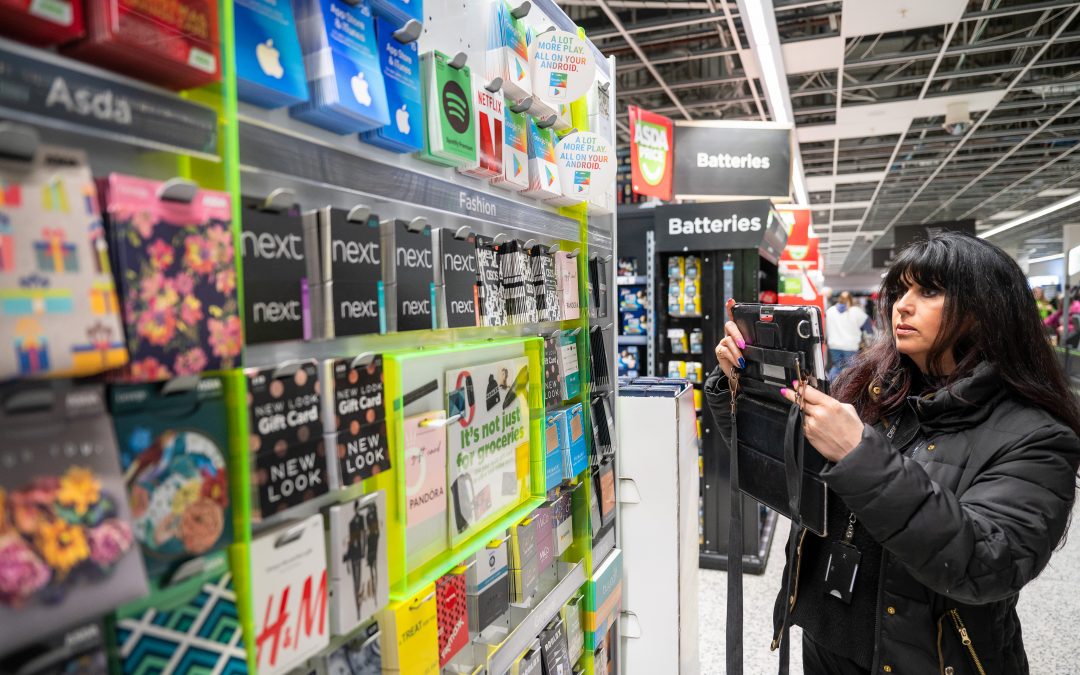Product availability can make or break a customer’s shopping experience.
Every business seeks to maximise customer satisfaction and profits, but what happens when a product runs out of stock? Product availability is key to success, yet it can be difficult to maintain inventory levels and ensure that customers have the products they need.
Let’s explore the best strategies for improving product availability and maintaining inventory levels. From setting up stock control systems to ensuring substitute products are at the ready, these tips will help you keep your customers satisfied while keeping costs in check.
So, let’s dive in and get to the heart of how to improve product availability and maintain inventory!
Why Is Product Availability So Important?
Product availability, as a concept, is simple: it’s a business’s ability to meet customer demands for a given item.
It’s a key success factor for retailers as failure to deliver consistent stock availability leads to frustrated customers. Finding their favourite products ‘out of stock’ turns loyal shoppers into I’m-not-coming-here-again shoppers.
So, why are product availability issues such a big problem?
Lack of availability can have detrimental effects on brands. Consistently having items out of stock demonstrates a failure to foresee and address deeper issues within your operations – supply chain issues, and the volatility of customer demand.
When demand is high, customers should know that they can count on you to stock items. Ultimately, having a successful product management system that correctly predicts demand is necessary in order to maximise profits and minimise costs associated with stockouts and overstocking.
What Are the Common Causes Of Product Unavailability?
- Manufacturing issues – Not uncommon, and unfortunately delays caused by the manufacturer are often outside of your control. There can also be unexpected world events that lead to raw material shortages, labour disputes, or labour shortages.
- Unexpected demand – Products can suddenly become popular overnight, especially with social media trends making products viral. Seasonal products for specific events can become out of stock quickly, but this is easier to predict.
- Supply chain issues – Logistics play a big part in product unavailability. There can be delays in shipping, customs clearance issues, or disruptions in transportation to your store.
- Inventory mismanagement – Poor inventory management is a big part of stock availability issues within retail.
Get Your Stock Together: Tips for Setting Up Stock Control
Stock control is an important part of any business that wants to ensure accurate product availability. It involves tracking stock levels and monitoring inventory to ensure that the right amount of items is available at all times.
Understanding stock levels and cycle counts is key to maintaining accurate product availability.
- Stock levels are the amount of inventory on hand at any given time
- Cycle counts include a regular audit of a small portion of the inventory, which encompasses the full inventory over time
To understand stock levels, you’ll want to track what items are coming in and out of your warehouse. By tracking sales, returns, and damaged products, you’ll be able to maintain a view of how much inventory you need to keep on hand.
Cycle counts help ensure accuracy because they allow you to double-check the numbers in your system against physical inventory items. These counts should be done periodically so that if discrepancies arise, they can be addressed quickly and efficiently.
Stock Control in 4 Simple Steps
- Create a list of items that need to be tracked, including their quantities and prices.
- Use a computer program or spreadsheet to track your stock so you can easily monitor levels and make adjustments.
- Set up a system (we’ll get to that later) for receiving new shipments and updating stock levels so you can keep track of when items need to be replenished.
- Finally, you can establish procedures for dealing with damaged or expired products so they are not included in inventory levels.
Sounds easier said than done, doesn’t it? With the right system in place, it will become easier and you’ll be able to maintain accurate records of your product availability!
Use Technology in Your Favour: Visual Merchandising Tools for Maintaining Stock Levels
Retail software technology is essential for stock control, especially if you have a large inventory or need to track multiple stores. Visual merchandising tools, inventory management software, and automated ordering systems can help you manage inventory levels more efficiently and reduce the risk of errors.
Implementing a system for stock notifications is a great way to stay on top of inventory. A stock notification system allows you to receive alerts when your inventory is running low or has reached a certain level. This helps you keep track of your items and restock them before they run out, preventing any disruption in service.
Tactical Solution has developed retail technology that can help you accurately predict stock – such as our image recognition technology, which makes it possible to monitor stock on shelves. We use real data to achieve this and get you the results quickly.
Clear the Clutter: Developing an Effective Stock Management Process
If we haven’t stressed it enough: stock management is an important part of running a successful business. Not only does it help you maintain product availability, but it also allows you to optimise inventory levels and reduce costs.
How can you do this? Streamlining the order management process is a good place to start.
You can do this by automating your order process and integrating your inventory and order management systems to ensure nothing is left out.
Use available tools and services to help you with store audits to collect data that you can later use in your management process. Once you have this, you can focus on managing your inventory in a way that is sustainable, with these tips:
1. Track Your Inventory
An effective tracking system ensures you’re not under or overbuying when coordinating stock intakes.
Spreadsheets are an invaluable tool but should only be used for smaller inventories (less than 100 items, for example). For larger amounts of stock, it is preferable to have an automatic system that can streamline the process and notify you of what you need. POS systems (point of sale) are useful here and can help you with a range of inventory needs.
What data do you need to track and record?
- Internal & supplier product codes: Suppliers commonly use stock-keeping units (SKUs) or universal product codes (UPCs).
- Product storage location: Where items are stored or displayed.
- Supplier information: This includes contact information, order minimums, case quantities, and delivery times.
- Quantities on hand (QOH): This is the current amount of stock per item in your store or warehouse.
- Product costs: How much it costs you, so wholesale costs and any quantity discounts.
- Retail pricing: Current sale pricing and any promotional pricing for items.
2. Optimise the Supply Chain
In order to have a successful management strategy, you need to optimise your supply chain. This will require high transparency and precision.
Once you have built a solid business relationship with your network of reliable suppliers, you’ll need to negotiate favourable terms, as well as identify opportunities to reduce costs and improve efficiency. This is an ongoing process.
You should also implement key performance indicators (KPIs) to track metrics such as on-time delivery, inventory turnover, and lead times. You can use this data to identify areas for improvement and implement changes to optimise your supply chain.
3. Create an Internal SKU System
An internal SKU (stock-keeping units) system is a way for a company to track its inventory by assigning unique codes to each product. The SKU code typically contains several pieces of information about the product, such as its category, colour, size, and other attributes.
As an example, an SKU code may look like GR009-4302_ORG-6PK. The information gleaned from the code could then be as follows:
- GR: This is the internal supplier code for an imaginary supplier.
- 009: This is the internal category code for apples. Some SKU systems opt for letters, so APL instead of 009.
- 4: This is the internal material code.
- 302: This ties to the last four digits of the supplier’s UPC (Universal Product Code).
- ORG: This indicates that the product is organic.
- 6PK: This shows that the product is sold in a 6-pack.
Having an SKU system in place allows you to get all the data you need (supplier, location, what it is, etc.) with just one set of numbers and letters. It helps you stay organised, save time and avoid miscommunication.
4. Organise your Inventory
Organising is essential to managing your stock. There are many techniques out there, but a great way to do this is to categorise your inventory into A, B, and C groups.
- A group: Higher-ticket items – you need less of these items as people tend to buy less of these unless you exclusively have luxury items then you’d have to base these on historical data.
- B group: In-between items – moderately priced items that are slower than those in the C group but faster than the A group.
- C group: Lower-cost items with a high turnover rate – you need a lot of these.
5. Use Real-Time Data
Real-time data can help you make informed decisions about inventory management. By monitoring sales and inventory levels in real time, you can quickly identify when certain products are selling faster than anticipated and adjust your inventory levels accordingly.
Implementing a proactive system is the key to success in retail. Data analytics can help you monitor performance and identify areas of underperformance.
Predicting the Future: Strategies to Accurately Forecast Product Demand
What exactly is a demand forecast?
Forecasting demand is like trying to read customers’ minds. It’s like predicting if they’ll want extra cheese on their pizza or not. And it’s not just about guessing how much they’ll want, but when they’ll want it too! It’s a tricky game of timelines, from shipping more chips on a Friday to planning out the next year’s offerings. But hey, if you can master this skill, you’ll be the ultimate mind reader of the business world!
It is crucial to maintain product availability. You can do this by analysing historical sales data to notice trends in customer behaviour and you’ll be able to accurately predict when certain products will be in higher demand and adjust accordingly.
To be successful at this, you need to be flexible and stay on top of trends within your area.
Factors to Consider in Demand Forecasting
What goes into an accurate demand forecast can be broken down into 4 categories:
Things That Are Within Your Control
There are a lot of things outside of your control when it comes to demand forecasting, but what are you in charge of? Your own retail marketing choices!
A fresh advertising campaign, paired with a new product offering, can reel in those coveted new customers. This, you can predict. For the most part, although there is no certainty as to if a campaign will work to the full extent that you predict. It is an indication that a big rush might happen. You know a big promotion is about to take place, so you can order and plan ahead to avoid product availability issues.
The price of goods and services has a notable impact on customer demand too, and it is important for forecasters to have a thorough understanding of these factors in order to make informed decisions. To ensure the effective integration of this information, we recommend promoting stronger collaboration between forecasters and sales and marketing teams.
Things That Are in Your Customers’ Hands
The most important factor is your customers: your customers and potential customers have a big impact on demand. Whether they’re satisfied or not is up to you though.
Loyal customers will stick by you until something goes wrong such as a lack of product availability of their favourite items. Super-satisfied customers bring in new business through referrals. Any customer could write a review, and those reviews can make or break demand. So, make sure to keep your customers happy and the positive reviews pouring in!
It’s not just about what you’re selling, it’s about the problem you’re solving for your customers. And let’s face it, if your competition comes up with a better solution, you’re in trouble! Stay ahead of the game by incorporating killer marketing strategies into your demand forecasting. After all, if no one knows about your amazing solution and range, how can they buy it?
Things That Are Up to Society
Macro-trends, or broad macro-level trends, are events that have nothing to do with your company but might impact the general population anyway. They are usually large-scale events such as continuous decade-long trends, the seasons, holidays, generational interests, etc., which all have a big impact on shopping trends and customer demands.
Macro trends can usually be predicted – for example, holidays such as Easter or Eid are consistent yearly events that let you know that there will be a rise in chocolate purchases and dates.
Things That Are Up to People on the Internet & Mother Nature
This one is complicated because it is the most unpredictable of them all. These factors are one-off events that influence customer demands and stock availability and, for the most part, are completely outside of your control.
We briefly mentioned this, but microtrends created by social media happen often and are hard to predict. Microtrends are a modern phenomenon that can last a few months to a few years but don’t normally follow the natural trend cycle.
Demand forecasting methods revolve around historical data, but one-off events can significantly skew the data. It is not just social media microtrends; it can be a natural disaster that suddenly closes off a main distribution centre or how when Covid-19 was first announced, people rushed to buy toilet paper.
One-off events can only be predictable if you know there is a trigger event about to happen, such as a new product launch that includes social media and influencer promotion or appearing in a TV show that might lead to a ‘viral moment’.
Shop Smart, Not Hard: Enhancing the Shopping Experience for Your Customers
At the end of the day, keeping your regulars happy is the goal so they continue to come back to your store for their shopping fix. Use their feedback to determine what products are popular and adjust your ordering accordingly.
Product availability issues happen – sometimes they’re outside of your control as we discussed before. A good way to combat this is to offer substitute products to ensure that your customers don’t leave empty-handed and dissatisfied. This could involve suggesting alternative items that are similar in style, design, or price point.
If an item is out of stock, a way to regain your customer’s loyalty is to offer a discount on the item they wanted if it becomes available again soon and provide other items with a similar value at no extra cost. By being flexible and creative when it comes to offering substitutes, you can ensure that customers don’t feel like they’ve been left without an option.
Making sure that necessary items are available when shoppers need them will help ensure that they have an enjoyable shopping experience each time they visit your store. By consistently providing customers with the products they want, you can keep them coming back again and again.
Get in touch with our amazing team about our retail technology services and how they can help you stay on top of your product availability!




